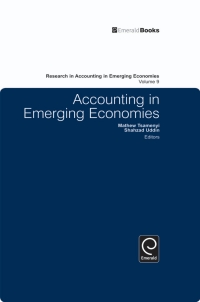! Required information [The following information applies to the questions displayed below.) In each of the cases below, assume that Division X has a product that can be sold eithe to outside customers or to Division Y of the same company for use in its production process. The managers of the divisions are evaluated based on their divisional profits. Case B 200,000 200,000 200,000 160,000 Division X: Capacity in units Number of units being sold to outside customers Selling price per unit to outside customers Variable costs per unit Fixed costs per unit (based on capacity) Division Y: Number of units needed for production Purchase price per unit now being paid to an outside supplier $90 $70 $13 $75 $60 $8 40,000 40,000 $86 $74 Required: 1-a. Refer to the data in case A above. Assume in this case that $3 per unit in variable selling costs can be avoided on intracompany sales. Answer is complete but not entirely correct. 70 3 67 Variable cost per unit Less: Avoidable cost Total contribution margin on lost sales No. of units transferred Transfer price 2 20 40,000 67 ! Required information [The following information applies to the questions displayed below.] In each of the cases below, assume that Division X has a product that can be sold either to outside customers or to Division Y of the same company for use in its production process. The managers of the divisions are evaluated based on their divisional profits. Case A B 200,000 200,000 200,000 160,000 Division X: Capacity in units Number of units being sold to outside customers Selling price per unit to outside customers Variable costs per unit Fixed costs per unit (based on capacity) Division Y: Number of units needed for production Purchase price per unit now being paid to an outside supplier $90 $70 $13 $75 $60 $8 40,000 40,000 $86 $74 2-a. Refer to the data in case B above. In this case, there will be no savings in variable selling costs on intracompany sales. Determine the transfer price of the selling division. Answer is complete and correct. 60 0 Variable cost per unit Total contribution margin on lost sales No. of units transferred Transfer price 2 40,000 60 If the managers are free to negotiate and make decisions on their own, will a 2-b. transfer take place? No Yes S 2-c. What is the range of transfer price the managers of both divisions should agree? The lowest transfer price would be and the highest transfer price would be Stavos Company's Screen Division manufactures a standard screen for high-definition televisions (HDTVS). The cost per screen follows: Variable cost per screen Fixed cost per screen Total cost per screen $ 116 35* $ 151 *Based on a capacity of 830,000 screens per year. Part of the Screen Division's output is sold to outside manufacturers of HDTVs and part is sold to Stavos Company's Quark Division, which produces an HDTV under its own name. The Screen Division charges $194 per screen for all sales. The costs, revenue, and net operating income associated with the Quark Division's HDTV are given below: $ 581 Selling price per unit Variable cost per unit: Cost of the screen $194 Variable cost of electronic parts 237 Total variable cost Contribution margin Fixed costs per unit Net operating income per unit 431 150 80* $ 70 *Based on a capacity of 210,000 units per year. The Quark Division has an order from an overseas source for 5,300 HDTVs. The overseas source wants to pay only $414 per unit. Required: 1. Assume the Quark Division has enough idle capacity to fill the 5,300-unit order. Is the division likely to accept the $414 price or to reject it? 2. Assume both the Screen Division and the Quark Division have idle capacity. Under these conditions, what is the financial advantage (disadvantage) for the company as a whole (on a per unit basis) if the Quark Division rejects the $414 price? 3. Assume the Quark Division has idle capacity but that the Screen Division is operating at capacity and could sell all of its screens to outside manufacturers. Under these conditions, what is the financial advantage (disadvantage) for the company as a whole (on a per unit basis) if the Quark Division accepts the $414 unit price. Complete this question by entering your answers in the tabs below. Required 1 Required 2 Required 3 Assume both the Screen Division and the Quark Division have idle capacity. Under these condition: advantage (disadvantage) for the company as a whole (on a per unit basis) if the Quark Division "Financial Disadvantage" amounts should be entered as a negative.) Financial advantage (disadvantage) on a per unit basis

















